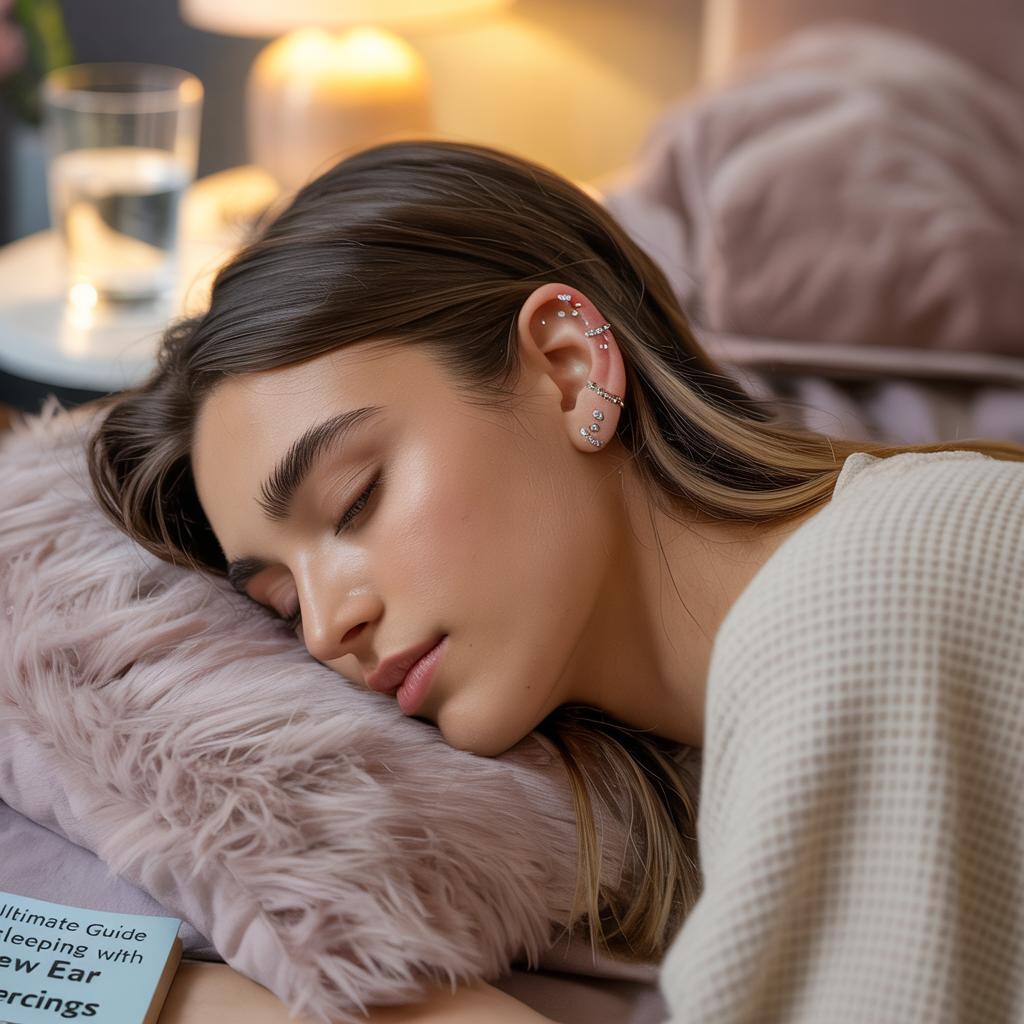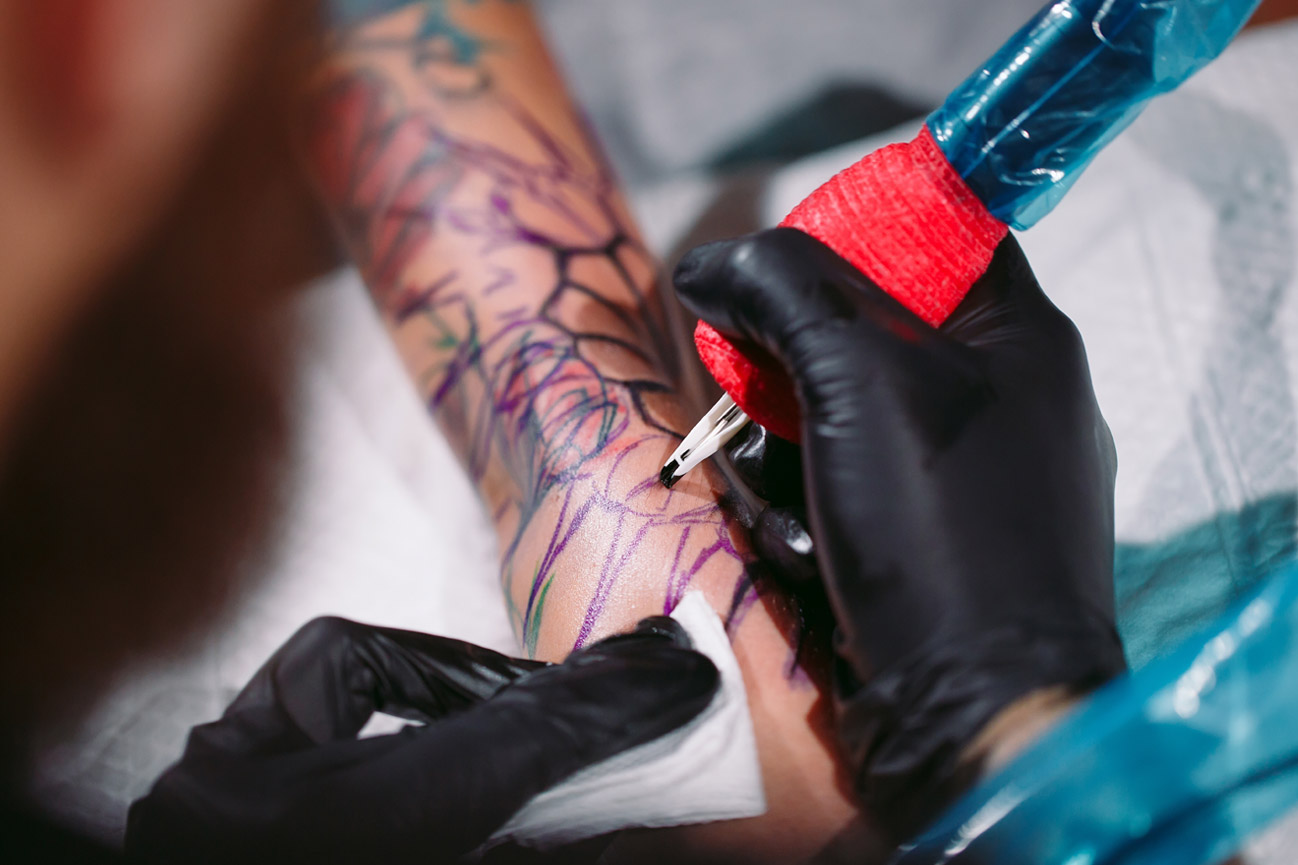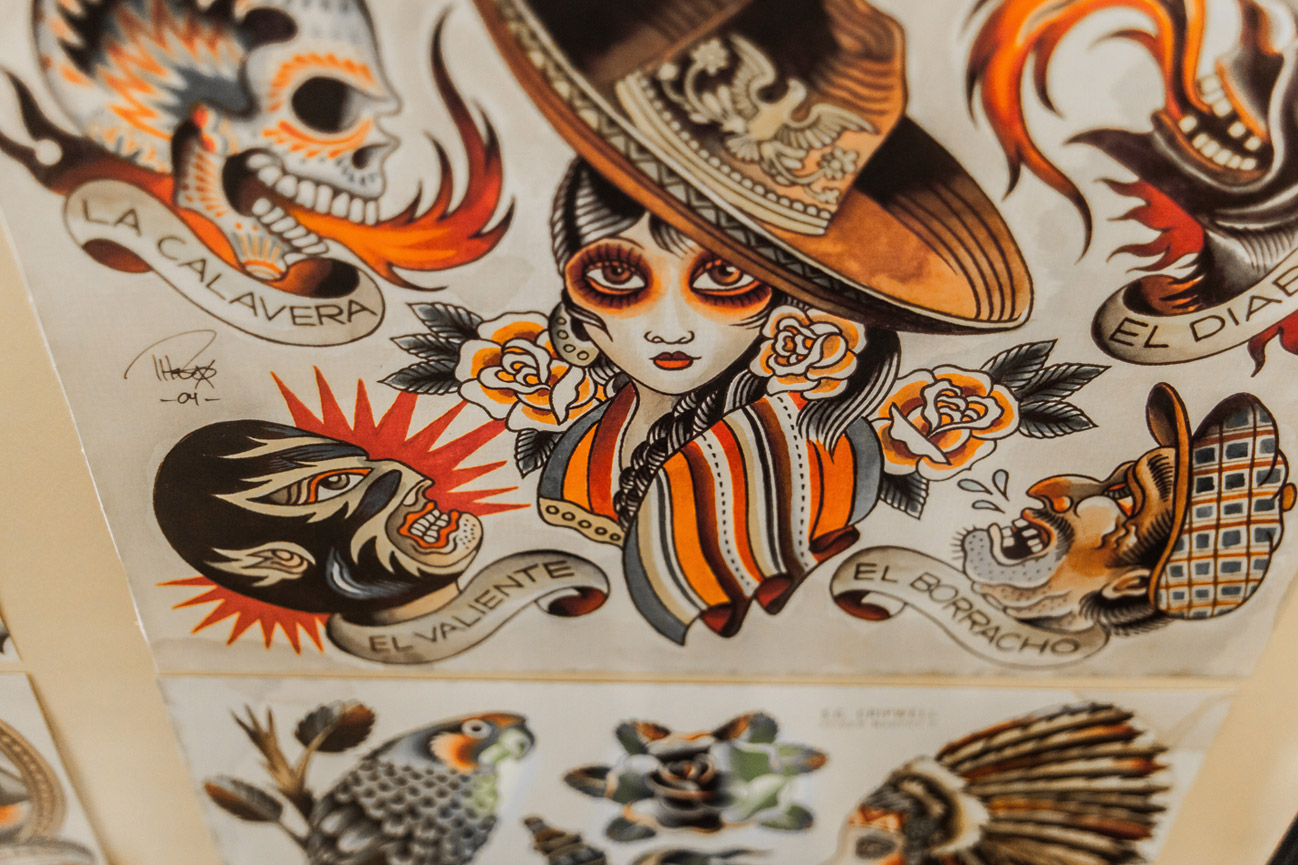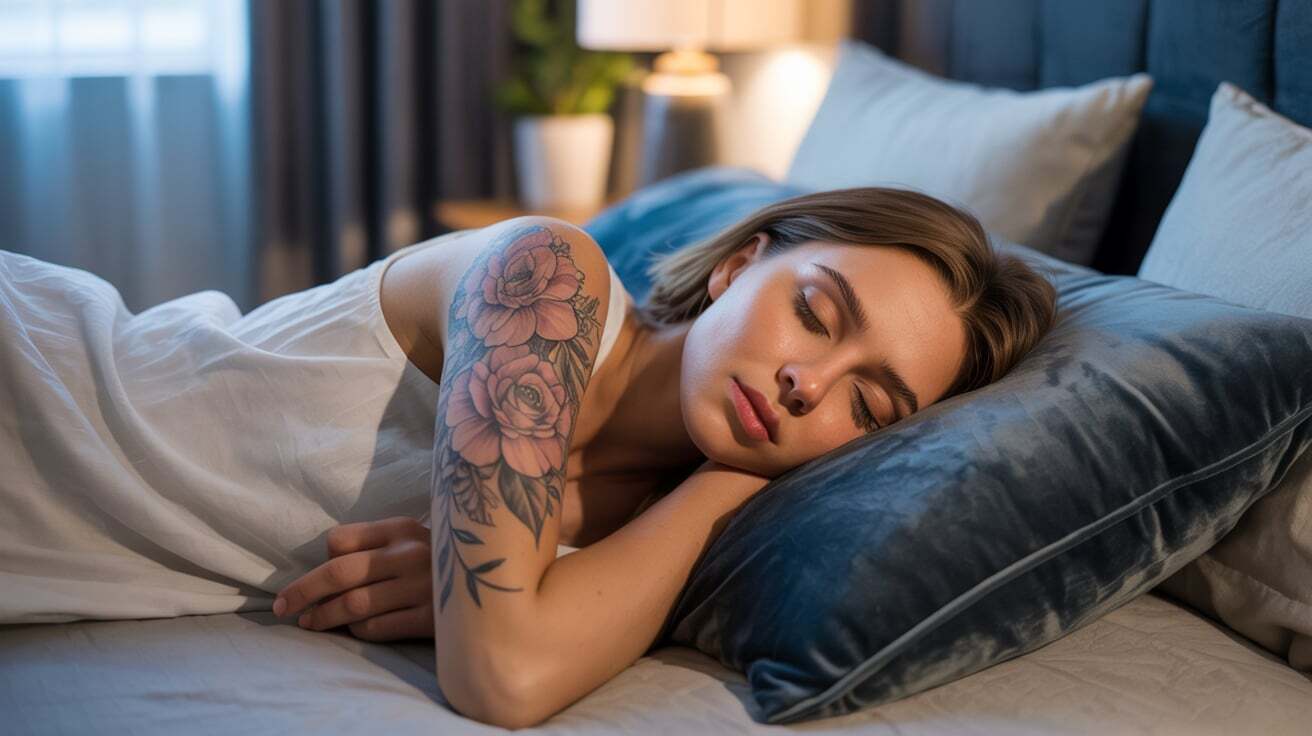Getting a new ear piercing is exciting, but the first question many of our clients ask after sitting in our chair is: “How am I supposed to sleep tonight?” At Platinum Ink Tattoo & Body Piercing, we’ve helped many Austinites through the piercing healing process, and we’ve gathered all our best tips to help you rest easy with your new jewelry.
If you’re tossing and turning because of your new piercing, you’re not alone. The good news? With a few simple adjustments to your sleeping routine, you can protect your piercing, prevent pain, and ensure proper healing—all while getting the rest you need.
The Sleep Challenge: Why Your Piercing Position Matters
New piercings are essentially open wounds that need time to heal properly. When you sleep on a fresh piercing, several issues can arise:
- Pressure on the jewelry can cause inflammation and delay healing
- Bacteria from pillowcases may enter the piercing site
- Jewelry can shift position if you toss and turn
- Movement can irritate the already sensitive area
The way you sleep during those critical first weeks can significantly impact your healing time. In fact, poor sleep positioning is one of the top reasons we see clients return with irritated piercings!
Best Sleep Positions for Fresh Ear Piercings
Back Sleeping: The Gold Standard
Research consistently shows that sleeping on your back is the ideal position for new ear piercings. This position keeps pressure off your ears completely, allowing the piercing to heal undisturbed.
If you’re already a back sleeper, you’re in luck! Continue your normal sleep routine, but be mindful of shifting positions during the night.
Not a back sleeper? Don’t worry—many of our clients have successfully trained themselves to sleep on their back during the healing period by:
- Using extra pillows on either side to prevent rolling
- Placing a small pillow under your knees to reduce lower back strain
- Building a “pillow nest” that makes side-sleeping less comfortable
Side Sleeping Solutions
If you’re someone who simply cannot sleep on your back (we understand!), we’ve got solutions for you too. Our ear piercing in Austin clients who are dedicated side sleepers have found these methods extremely helpful:
The Travel Pillow Technique
This is the most popular method we recommend:
- Get a U-shaped travel or neck pillow
- Position your head so your ear sits in the center hole
- Your piercing now has a safe space free from pressure
This simple hack creates a pressure-free zone for your ear while letting you maintain your comfortable side position.
The Donut Pillow Method
Another effective option is a donut-shaped pillow:
- Place a small donut pillow on your regular pillow
- Position your ear in the center hole
- Enjoy pressure-free side sleeping
For Piercings on Both Ears
If you’ve gotten piercings on both ears, sleeping becomes trickier but not impossible. We recommend:
- Alternating the travel pillow technique from side to side
- Using a specialized piercing pillow with cutouts on both sides
- Prioritizing back sleeping for at least the first few weeks
Bedding Care: Your Secret Weapon Against Infections
While sleep position gets most of the attention, your bedding plays a crucial role in preventing infections during the healing process.
The Clean Pillowcase Routine
Bacteria on pillowcases is a common source of piercing infections. Here’s what we recommend:
- Change your pillowcase every 1-2 days during the healing period
- Use clean, freshly laundered pillowcases
- Consider using pillowcases made of silk or satin for less friction
The T-Shirt Hack
This budget-friendly tip from the Association of Professional Piercers (APP) has saved many piercings:
- Take a large, clean t-shirt
- Slip it over your pillow
- Use one side for one night
- Flip the pillow for night two
- Turn the shirt inside out for nights three and four
- Wash and repeat
This gives you four nights of clean surface without daily laundry!
Jewelry Selection for Sleeping
What you wear in your piercing at night matters almost as much as how you sleep.
Best Jewelry Choices for Nighttime
- Small, flat-backed studs are the ideal choice for sleeping
- Keep wearing the professional starter jewelry we provide
- Avoid hoops, dangles, or anything that can catch on bedding
- If swelling has reduced, talk to us about downsizing your post to prevent snagging
Remember: Never change your jewelry until your piercing is fully healed and your piercer gives you the green light!
Healing Timelines: Managing Your Expectations
Different ear piercings have different healing timelines, which affects how long you’ll need to be careful with your sleeping habits:
Lobe Piercings
- Initial healing: 6-8 weeks
- Complete healing: Up to 3 months
- Special sleep care needed: First 3-4 weeks
Cartilage Piercings (Helix, Conch, Tragus, etc.)
- Initial healing: 3-4 months
- Complete healing: Up to 12 months
- Special sleep care needed: First 2-3 months
Cartilage piercings take significantly longer to heal because this tissue has less blood flow than your earlobe. This means you’ll need to be extra careful with your sleep positions for a longer period.
Pre-Bedtime Piercing Care Routine
Establishing a pre-sleep piercing care routine will help your piercing heal faster and reduce nighttime discomfort:
- Clean your piercing with sterile saline solution
- Dry thoroughly with a clean paper towel
- Secure long hair in a loose braid or bun to prevent tangling
- Position your special pillow before you get tired
- Check that jewelry is secure before lying down
Common Nighttime Challenges and Solutions
Problem: Waking Up on the Wrong Side
Many people start on their back but wake up on the pierced ear.
Solution: Place physical barriers like extra pillows on the pierced side to prevent rolling.
Problem: Hair Getting Caught in the Piercing
Solution: Secure hair away from your ears at night using loose braids, buns, or a sleep cap.
Problem: Piercing Feels Hot and Painful at Night
Solution: Apply a cold compress (not ice) for 10 minutes before bed to reduce inflammation.
Problem: Partner or Pet Bumping Your Ear
Solution: Sleep on the edge of the bed with your pierced ear facing outward or use a body pillow as a buffer.
What to Do If You Do Sleep on Your Piercing
Even with the best intentions, you might accidentally sleep on your new piercing. If this happens:
- Don’t panic! One night won’t ruin everything
- Check for irritation in the morning
- Clean the piercing with saline solution
- Monitor for issues throughout the day
- Adjust your setup for better results tonight
When to Contact Your Piercer About Sleep Issues
Reach out to us if you experience:
- Significant increase in pain after sleeping
- Excessive swelling that doesn’t reduce
- Jewelry that appears to be embedding
- Consistent sleeping problems despite using these techniques
We’re always here to help you troubleshoot your healing process!
Beyond Sleeping: Daytime Habits That Support Nighttime Healing
What you do during the day affects how your piercing feels at night:
- Stay hydrated to support healing
- Avoid alcohol before bed (it can increase swelling and cause restless sleep)
- Take anti-inflammatories if recommended by your piercer or doctor
- Avoid touching or playing with your new piercing
Advanced Tips for Different Ear Piercings
For Helix Piercings
The upper ear cartilage is particularly susceptible to pressure injuries. Consider:
- Using a smaller travel pillow
- Wrapping your pillow in a clean t-shirt daily
- Being extra cautious with hair products
For Tragus or Daith Piercings
Inner ear piercings require special attention:
- Clean thoroughly before bed to remove any debris
- Use a smaller travel pillow or specialized piercing pillow
- Be especially careful with earbuds or headphones
For Industrial Piercings
With two connected piercing points, industrials need extra care:
- A larger donut or travel pillow to accommodate the bar
- More frequent pillow case changes
- Extended special sleeping arrangements (3+ months)
Ready for Better Sleep With Your New Piercing?
Getting quality rest while healing your new piercing is entirely possible with the right approach. By following these expert tips from our professional piercers at Platinum Ink, you’ll be sleeping soundly while your new piercing heals beautifully.
If you’re still considering getting that ear piercing you’ve been dreaming of, don’t let sleep concerns hold you back! Our expert piercers will guide you through every step of the aftercare process, including personalized sleep recommendations based on your specific piercing and sleep habits.
Frequently Asked Questions About Sleeping With New Ear Piercings
Can I use a special pillow right from the first night?
Yes! We actually recommend using a travel or donut pillow from the very first night. Getting started with good habits immediately gives your piercing the best chance of healing properly.
How long do I need to sleep with special arrangements?
For lobe piercings, plan on 3-4 weeks of careful sleeping. For cartilage piercings, you should maintain special sleeping arrangements for at least 2-3 months.
What if I absolutely can’t sleep on my back or with a special pillow?
If you’re struggling with the recommended sleep positions, consider getting your piercing at a time when you can take a few days off to adjust to the new sleeping style. Alternatively, consider piercings on just one ear at a time, so you can always sleep on the unpierced side.
Is it better to pierce one ear at a time if I’m a side sleeper?
Yes, for dedicated side sleepers, we often recommend piercing one ear at a time, allowing the first to heal substantially before doing the second ear. This approach ensures you always have a comfortable side to sleep on.
Can I use pain relievers to help me sleep with a new piercing?
Consult with your healthcare provider, but generally, over-the-counter anti-inflammatories can help reduce discomfort during the initial healing period, making it easier to sleep. However, they shouldn’t replace proper sleep positioning techniques.
How do I know if sleeping positions are affecting my piercing healing?
Signs that your sleeping position may be causing problems include: one-sided irritation, significantly more tenderness in the morning, visible changes in jewelry angle, or localized swelling on the side you sleep on.




